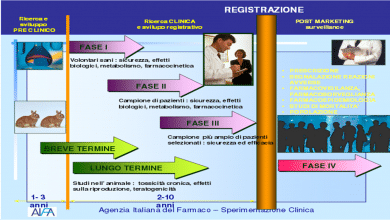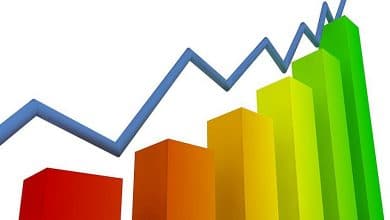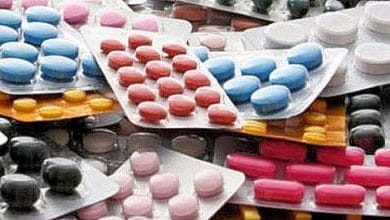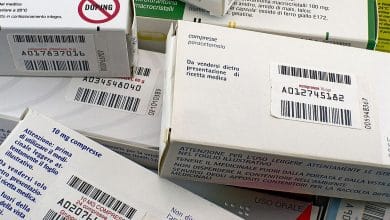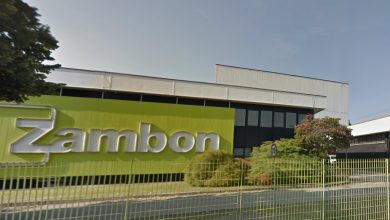
We went to Wavre, Belgium, to the largest vaccine manufacturing center in the world. Where, in addition to 4,500 employees, 1,300 are in charge of quality controls and it can happen that an entire batch of vaccines is pulped because a note sheet is missing. “Vaccines save 2.5 million lives each year, and a much higher number are spared the devastating consequences of infections.” “It takes five years of checks on every screw, every valve, every single procedure before a plant, once finished, can go into operation”
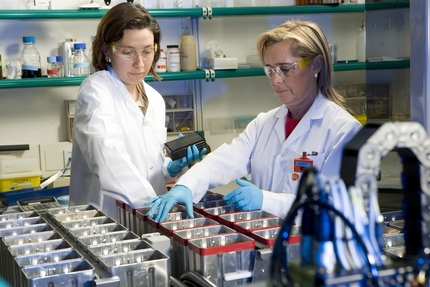 We were five journalists from five different European countries invited to visit GSK's vaccine manufacturing center in Wavre, Belgium. The site is about thirty kilometers from Brussels, and no one had thought, in mid-February, of wearing sunglasses, which instead would have really helped. In fact, when we woke up in the morning, instead of the damp gray we imagined, a clear light awaited us, before a long series of surprises, which in the winter morning was reflected on the frost-glazed Belgian countryside.
We were five journalists from five different European countries invited to visit GSK's vaccine manufacturing center in Wavre, Belgium. The site is about thirty kilometers from Brussels, and no one had thought, in mid-February, of wearing sunglasses, which instead would have really helped. In fact, when we woke up in the morning, instead of the damp gray we imagined, a clear light awaited us, before a long series of surprises, which in the winter morning was reflected on the frost-glazed Belgian countryside.
But in the open air, pleasantly fizzy, we were very little. After the queue to get the pass, together with the veiled Malaysian researcher, the 12-heeled American executive and dozens of other visitors of every color and nationality on the list for the most varied reasons, we finally entered the center of Wavre.
In Belgium there are three different vaccine settlements owned by GSK, within walking distance of each other, but the one in Wavre, by itself, is enormous.
It's easy to say that it looks like a city, with buildings, streets, gardens, but the impression is rather that of being in a large science fiction film space station, with windows, stairs and halls with ceilings so high as to make anyone feel like an ant, in the midst of the swarming of thousands of people in which, however, every movement is monitored, every access controlled.
The site is the headquarters of GSK's vaccine section and is perhaps the best place to understand what a huge challenge it is to make a vaccine available to millions of people, both in ordinary situations and in the face of an emergency, such as the current outbreak of meningitis in Tuscany.
GSK produces approximately 800 million doses of vaccines annually, sent to 170 countries around the world. "However, only a drop in this great sea of vaccines comes out of this structure: the hexavalent, those against hepatitis ... in total no more than 4-6 products among the approximately 40 in the company's portfolio", he explained to us with his Irish accent John McGrath, head of GSK's global industrial operations. «The others come from about fifteen other centers spread throughout the world, divided according to criteria linked to the methods of production: those against influenza have dedicated routes, as well as those made up of live and attenuated viruses (for example vaccines for measles or rubella), which require an even higher level of safety than what is observed here".
The so-called antigens, small fragments of the microorganism capable of stimulating the specific immune response, but not of reproducing and therefore of inducing the disease, are not always isolated and purified in the same place from where the vaccine will come out: those necessary to produce the hexavalent, for example, come from three different factories in three different countries, and here they are only (so to speak) assembled into a single product, which in reality is not unique, since each country of destination demands small specific differences in to take into account.
The domain of complexity
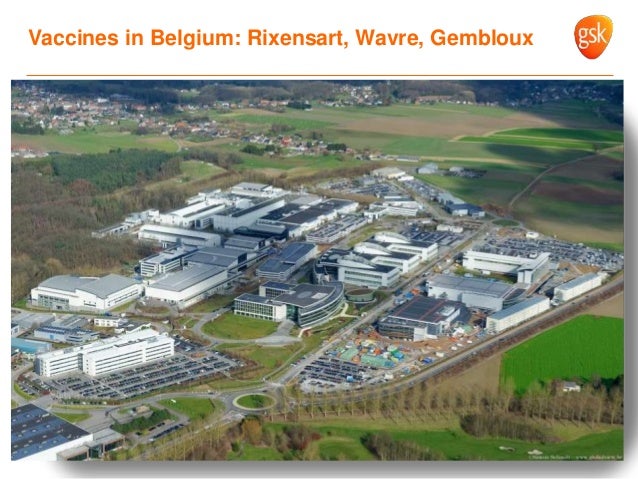 For those who set foot in a plant like the one in Wavre, for those who are confronted with the experts who work there, for those who look into the belly of vaccine production, there is one word that finds it hard to get out of their heads: it is "complexity". And it is perhaps this that helps explain why, after the acquisition of the Novartis vaccine sector by GSK, there are only four large multinationals left that invest in vaccines: «To enter this sector, greater investments are needed than those necessary to produce the other drugs, whose chemical synthesis is simpler and which are subject to less stringent regulatory mechanisms,” explains Thomas Breuer, medical director of the vaccine sector at GSK.
For those who set foot in a plant like the one in Wavre, for those who are confronted with the experts who work there, for those who look into the belly of vaccine production, there is one word that finds it hard to get out of their heads: it is "complexity". And it is perhaps this that helps explain why, after the acquisition of the Novartis vaccine sector by GSK, there are only four large multinationals left that invest in vaccines: «To enter this sector, greater investments are needed than those necessary to produce the other drugs, whose chemical synthesis is simpler and which are subject to less stringent regulatory mechanisms,” explains Thomas Breuer, medical director of the vaccine sector at GSK.
"A large part of the production, then - 80 percent, in the case of GSK - is destined for low- or middle-income countries from which little profit is made, which must be compensated for by sales in richer countries". In fact, the global vaccine market represents only about 2-3% of the global drug market. "In Italy it is 350 million, which corresponds to only a small share of the over 5 billion that the government has reserved for prevention, corresponding to 5 percent of the 111 billion of the National Health Fund", adds Daniele Finocchiaro, president and CEO of GSK Italy. "For a comparison with other items of pharmaceutical expenditure, think that 600 million are spent in Italy on statins alone, which are used to lower cholesterol, not to mention the two billion destined for drugs for hepatitis C".
Not that pharmaceuticals don't make money from vaccines. Revenues in this sector are growing: according to a report by Marketsandmarkets, the global vaccine market, which was just over 33 billion dollars in 2014, it will be close to 58 by 2019. Furthermore, investing in vaccines gives you the additional advantage, not a secondary one, that the intellectual right does not expire like that of other medicines, which after a few years are subject to competition of generics.
Alongside the earnings of the pharmaceutical industry, however, in the various situations, it would also be necessary to weigh the benefits that patients or, more generally, society derive from the various treatments. Vaccines do this by saving, according to the World Health Organization, 2.5 million lives, mostly children, each year, and saving many more from paralysis and other forms of disability.
Big Pharma makes money, but there's no doubt that everyone makes money, and not just in terms of human lives. After the possibility of accessing drinking water, vaccinations are considered the most effective and valuable measure in terms of public health. Infectious disease prevention increases productivity and reduces healthcare costs. The international agency has also calculated that, beyond the human value, the return in economic terms of investments in vaccinations is 12-18 percent.
The slowness of quality
But all this is known. Less well known, however, is that the main problem for vaccine producers is not being able to place the products crammed into warehouses, but keeping up with requests, which are much more variable and unpredictable than those of drugs to lower blood pressure or glycemia. If even for medicines, therefore, there are sometimes supply difficulties (see "C for deficiency. If the whole world runs out of medicine”), all over the world there are situations in which getting one or the other vaccine is still a real feat. The visit to the Wavre site explained to me how this is possible.
 In Tuscany, for example, there is a hunt for the vaccine against meningococcus C, responsible for about forty cases of meningitis that occurred in the area between 2015 and the beginning of this year. The 150,000 doses of Menveo supplied by GSK and the 100,000 of Nimenrix that arrived from Pfizer in recent days are not even remotely enough to cover the emergency. To these two quadrivalent vaccines, which also protect against 3 other meningococcal strains (A, W135 and Y), GSK has added 200,000 doses of monovalent, i.e. useful only against the C strain. Region, which aims to protect about one and a half million people from the disease.
In Tuscany, for example, there is a hunt for the vaccine against meningococcus C, responsible for about forty cases of meningitis that occurred in the area between 2015 and the beginning of this year. The 150,000 doses of Menveo supplied by GSK and the 100,000 of Nimenrix that arrived from Pfizer in recent days are not even remotely enough to cover the emergency. To these two quadrivalent vaccines, which also protect against 3 other meningococcal strains (A, W135 and Y), GSK has added 200,000 doses of monovalent, i.e. useful only against the C strain. Region, which aims to protect about one and a half million people from the disease.
"In these first weeks of the year we have already delivered a total of 350,000 doses to Tuscany alone, including square and single-purpose products, equal to last year's entire supply," explains Finocchiaro. To have a parameter, until a couple of years ago, before this emergency, the average consumption of vaccines against meningitis C throughout Italy was around 100,000 doses. «To try to meet the requests we have now managed to obtain another 700,000 doses from Greece, Indonesia and Argentina. To deliver them, we are awaiting confirmation from the Region ».
But why is it so difficult to get vaccines in case of need? Wouldn't it be enough to produce more?
Only by observing how a vaccine is made can one understand why pharmaceutical companies, faced with such strong demand, even from a public opinion that in general seems increasingly reluctant to be vaccinated, are unable to exploit the opportunity and deliver the products asap.
It is not simply a question of production capacity, even if about five years of checks on every screw, every valve, every single procedure must go through before a plant, once finished, can go into operation. "The go-ahead for each individual building must come from the World Health Organization, the European Medicines Agency, the US Food and Drug Administration, as well as other national regulatory authorities in other non-European countries such as Brazil or Japan," he explains. McGrath. «The requests are often not the same, so we need to find a way to raise the standards so that they satisfy everyone. And these standards must be maintained over time, since each year there are more than a hundred inspections by the various bodies". The GSK center in Wavre, for example, is subject to inspections by the health authorities around 250 days a year.
This, however, is what happens upstream. Try to guess how long it takes to make a new batch of any vaccine that is already routinely in production. There is no mention of the search for a new product, which requires years, usually more than 10-15, necessary for the fine-tuning, development, execution of studies that confirm safety and efficacy, authorization procedures.
There is a lot of talk about how expensive this path is in terms of time and money, and how one could try to shorten it. This argument applies to all drugs. "But if designing and producing a common drug is equivalent to designing and producing a car, while a biological drug is much more complex, designing and producing a vaccine is even more complex, like taking a shuttle into space," concludes McGrath. who has worked in the field of biological drugs for more than twenty years.
The time necessary to have a new vaccine has been seen in the course of the latest international emergencies: «In the case of Ebola, given the public health emergency of international interest, the World Health Organization has allowed the procedures to be speeded up, so to be able to start testing the first vaccines in the field in good time,” explains Breuer. In that case, GSK narrowly lost the race with Merck, which managed to demonstrate the efficacy of its vaccine while Ebola was giving its final blows, but has nevertheless developed a product that will be ready for the next occasion . "Even in this case, however, we didn't start from scratch, because there were already years of study behind Ebola".
For zika, it's a whole other story. In the midst of so many tropical diseases that compromise the health and productivity of populations in developing countries, no one had ever taken this virus into consideration, due to the slight symptoms it gives, before the suspicion arose of its possible link with microcephaly of newborns. If any company today decided to start the process of producing a vaccine, it would take many more years to arrive at a first experimental product: the bulk of the damage would have already been done or someone else would have found another solution. Investing in it doesn't seem like a big deal.
One vial 100 checks
 But let's go back to the vaccines that already exist on the market. What times did you bet on for their production? Two weeks? Two months? Well, the single dose that crossed the threshold of a pharmacy or ASL in February 2016 began its journey at least 9-10 months, but more often two years ago. In fact, all this time is needed for each batch to obtain and purify the antigen, i.e. the substance extracted from the viruses or bacteria which will have to evoke the immune response; pair it, when necessary, with other elements that facilitate this response; mix it with the various necessary excipients and with other antigens, in the case of vaccines that protect against multiple diseases; fill the vials; pack them; ship them all over the world.
But let's go back to the vaccines that already exist on the market. What times did you bet on for their production? Two weeks? Two months? Well, the single dose that crossed the threshold of a pharmacy or ASL in February 2016 began its journey at least 9-10 months, but more often two years ago. In fact, all this time is needed for each batch to obtain and purify the antigen, i.e. the substance extracted from the viruses or bacteria which will have to evoke the immune response; pair it, when necessary, with other elements that facilitate this response; mix it with the various necessary excipients and with other antigens, in the case of vaccines that protect against multiple diseases; fill the vials; pack them; ship them all over the world.
New technologies will make it possible to speed up some of these processes in the future, but, even considering all these phases, such long times can only be understood considering that 70 percent of this process is due to quality controls: by the company, first of all, but also of the country where the vaccine is produced and the one where it is imported.
During this process, each lot is subjected to at least a hundred checks and tests, which in some cases become more than 500. A small irregularity is enough for the whole lot to be decommissioned.
For example, here in Wavre, the problem facing today Clive Blatchford, a friendly Welshman who loves flashy ties and is GSK's vice president of global vaccine quality control, may seem trivial: the dossier that documents step by step the processing of a batch of vaccines one page is missing. One page in a thousand. "It probably doesn't mean anything," he comments. "But 'probably' isn't enough here, and if it doesn't turn up, the whole lot will be thrown away and won't be able to enter the market."
Blatchford leads a team of 1,300 dedicated exclusively to quality control, a staggering number when compared to the 4,500 staff working at the Wavre site. Like the products and procedures, these colleagues are also subjected to the careful supervision of the quality team, which is responsible for verifying, for example, that all personnel are adequately trained and updated.
Think of the large incubators, called isolators, in which all the ingredients are mixed to obtain the final formulation of a vaccine. The operation is done by hand, under the control of sophisticated equipment, and requires extreme precision. If by mistake a drop falls from the pipette, the entire insulator, which must always guarantee absolute sterility, must be cleaned and disinfected, with a procedure that requires the commitment of at least a couple of people for several hours. You can't even try to turn a blind eye, because there are always at least three people at work at the same time, who watch over each other. At least 6-9 months of training are required before each of them can put their gloved and disinfected hands on their own in the additional gloves built into the wall of the isolator, and operate inside it.
Each glass vial must prove that it is not chipped or cracked, each certification must be checked down to the last comma. After all these checks, carried out at every single stage of the process, it takes another nine weeks to double-check everything and give the green light to the lot.

Programming the unpredictable
The programming of such a complex process must take place at least one year in advance. This explains why it is impossible to respond quickly to a new request, such as one that comes from an epidemic or a natural disaster. But other types of events may also cause demand to surge, such as the wave of refugees who have arrived in Europe in recent months from countries at war and who must be protected because the health systems for many years were unable to provide even the most essential vaccines.
Or simply the decision, taken out of the blue by the Spanish government, to also distribute the meningitis B vaccine in pharmacies or that of other countries to recommend a pertussis booster, which has resulted in a shortage of both vaccines throughout Europe . "In all these cases, or when we find ourselves in the need to make up for the fact that a competitor company, due to its difficulties, is unable to guarantee all the necessary doses, we have a written code that establishes priorities in assigning the available doses" explains Norman Begg, vice president, head of scientific affairs and public health of GSK's vaccine sector, who like Breuer is a physician and comes from various positions in public health. «Public health needs come first, for example an epidemic in progress, also taking into account the possibility of intervention by other companies; then the supplies to the governments with which we have engaged by signing contracts; finally comes the private market».
Not only the general public, but also political decision makers do not seem to be aware of the technical difficulties associated with the supply of vaccines and do not take them into account when taking their measures. The one against meningitis B, for example, was developed by the group of Rino Rappuoli in Siena with an innovative technology, the so-called "reverse vacciniology”. Since it has been on the market for about a year and a half, its demand has rapidly exceeded expectations. The British government, by deciding in September last year to vaccinate the entire population, made use of the available doses. “Nine regions are currently distributing it in Italy, but, in view of the approval of the National Vaccine Plan which would extend it to the whole country, we have taken precautions by reserving the necessary doses for it,” says Finocchiaro. "Should other countries decide to introduce it into their prevention programmes, however, they will have to wait long enough to produce it."
Related news: AIFA. Immunization strategies and the importance of setting a sustainable price for vaccines
The (dis)information on vaccines: a challenge to overcome
Congress Waidid, new European guidelines on vaccinations in adults and the elderly
The mayor: "Vaccines are dangerous." And the demand for serums collapses in the country

